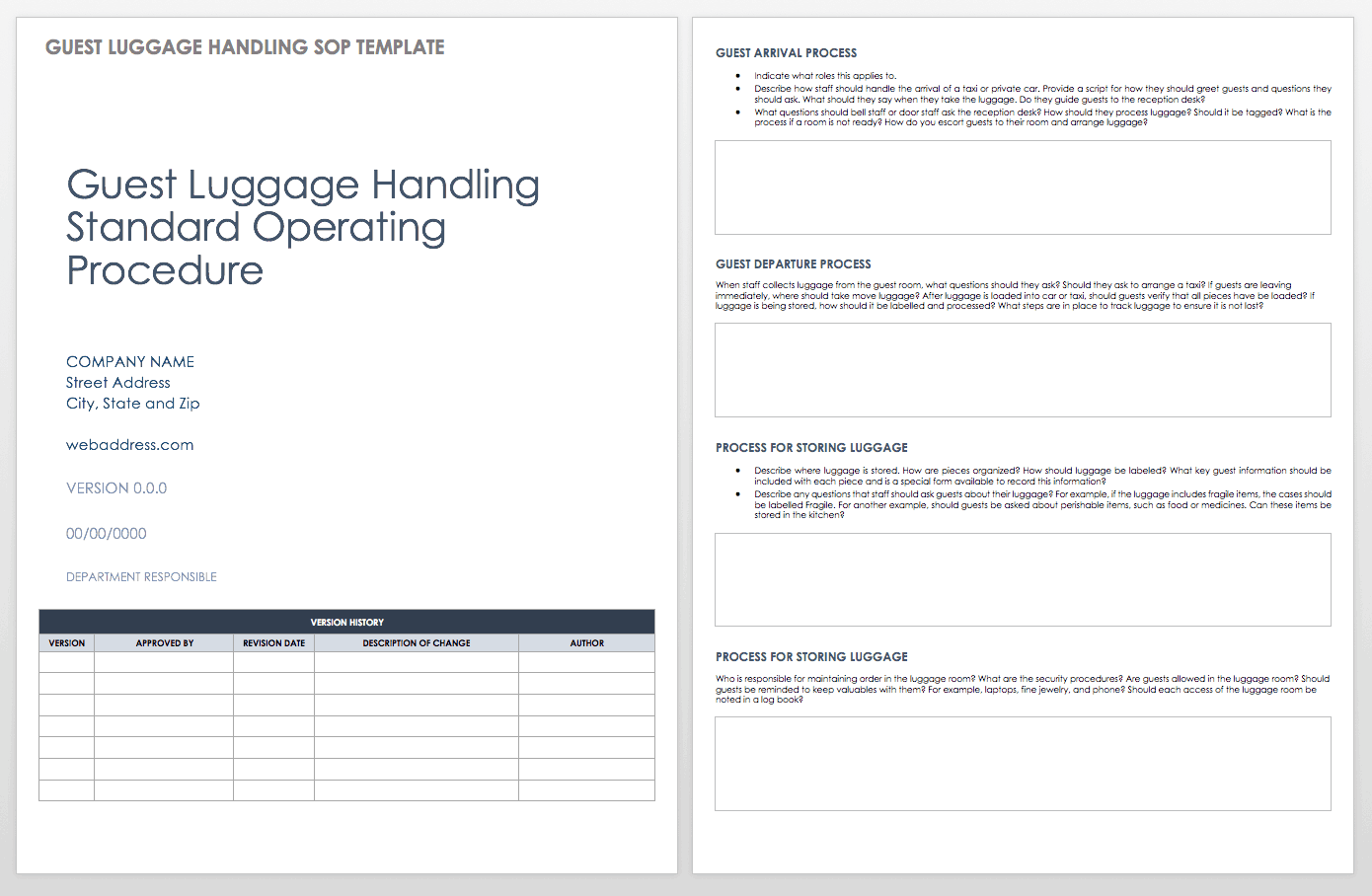A standard operating procedure (SOP) is a set of step-by-step instructions that outlines how to perform a specific task or process. It serves as a guide for employees to ensure consistency, efficiency, and safety in their work. In today’s digital age, standard operating procedures have become increasingly popular as they provide a tangible and accessible format for employees to refer to.
This article will explore the what, why, and how of SOPs, along with examples, samples, and tips for successful implementation.
What is a Standard Operating Procedure?
A standard operating procedure is a document that outlines the specific steps and protocols required to complete a task or process clearly and concisely. It is typically created in a format, such as a PDF or Word document so that employees can easily access and refer to it when needed.
SOPs are used in a variety of industries and sectors, including manufacturing, healthcare, hospitality, and more. They are especially useful for tasks that require a high level of precision or involve potential risks or hazards.
Why Use Standard Operating Procedures?
There are several reasons why organizations choose to use standard operating procedures:
- Consistency: SOPs ensure that tasks are performed consistently and by established standards. This reduces the risk of errors and variations in output.
- Efficiency: By providing a clear and structured set of instructions, SOPs help employees complete tasks more efficiently, saving time and resources.
- Training and Onboarding: SOPs are valuable tools for training new employees and ensuring they understand how to perform their tasks correctly. They provide a standardized training resource that can be easily referenced.
- Compliance: In industries with strict regulations and guidelines, SOPs help organizations meet compliance requirements and ensure that tasks are performed safely and by legal standards.
- Continuous Improvement: SOPs can be regularly reviewed and updated to reflect changes in processes, technology, or best practices. This allows organizations to continuously improve their operations and adapt to evolving needs.




How to Create a Standard Operating Procedure
Creating a standard operating procedure involves several key steps:
- Identify the Process: Determine which process or task requires an SOP. It is important to choose a process that is critical, repetitive, or poses potential risks.
- Document the Steps: Break down the process into clear and sequential steps. Use concise language and avoid jargon or technical terms that may confuse the reader.
- Include Visual Aids: Whenever possible, supplement the text with visual aids such as diagrams, flowcharts, or images. Visual aids can enhance understanding and make the SOP more engaging.
- Review and Revise: Have the SOP reviewed by subject matter experts or those who regularly perform the task. Incorporate their feedback and revise the SOP accordingly.
- Format for Print: Once the content is finalized, format the SOP for print. Consider using a professional design or template to enhance readability and aesthetics.
- Distribute and Train: Share the SOP with relevant employees and provide training on how to use and follow it. Ensure that employees understand the purpose and importance of the SOP.
- Regularly Update: SOPs should be regularly reviewed and updated to reflect any changes in processes, technology, or best practices. Set up a system to track and manage revisions.
Tips for Successful Implementation of SOPs
- Keep it Simple: Use clear and concise language. Avoid unnecessary technical terms or jargon that may confuse the reader.
- Include Visuals: Supplement the text with visual aids such as diagrams, flowcharts, or images to enhance understanding.
- Make it Accessible: Ensure that the SOP is easily accessible to employees, either in digital or physical format.
- Regularly Review and Update: SOPs should be regularly reviewed and updated to reflect any changes in processes, technology, or best practices. Assign someone to be responsible for managing revisions.
- Provide Training: Train employees on how to use and follow the SOP effectively. Ensure they understand its purpose and importance.
- Seek Feedback: Encourage employees to provide feedback on the SOP and incorporate their suggestions for improvement.
- Monitor Compliance: Regularly monitor and assess whether employees are following the SOP correctly. Provide guidance and support when needed.
Free Standard Operating Procedure Template!
Standard operating procedures are valuable tools for organizations to ensure consistency, efficiency, and safety in their operations. By creating clear and detailed instructions in a format, employees can easily access and refer to SOPs when needed.
Remember to keep the SOPs simple, include visuals, and regularly review and update them to reflect any changes in processes or best practices. With proper implementation and training, SOPs can greatly enhance the performance and productivity of your organization.
Standard Operating Procedure Template Word – Download
